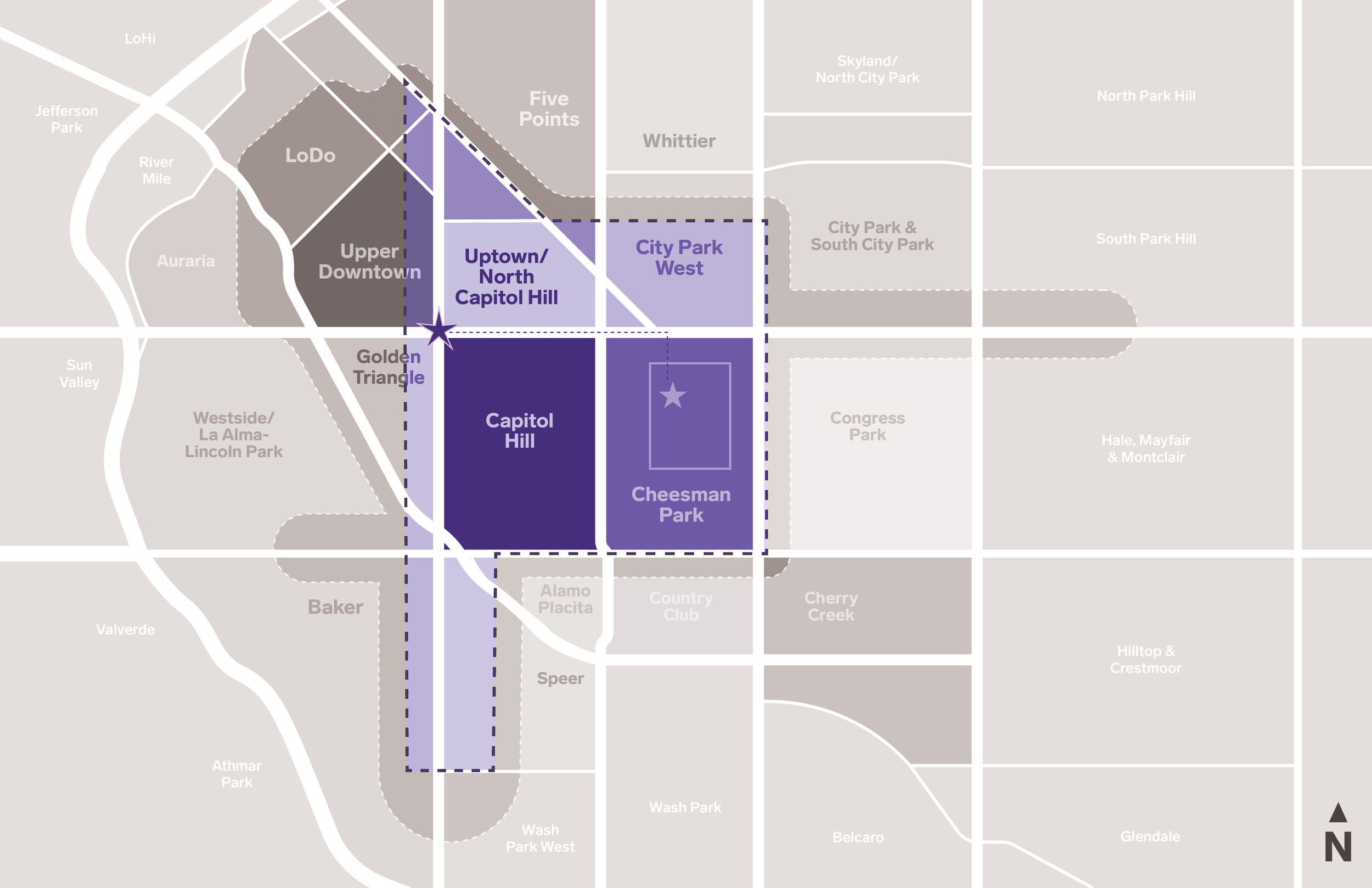Denver’s East side has a long, rich Queer historical and cultural legacy. Historically, Queer spaces in Denver tended to be clustered in areas people were less-likely to notice and as the city grew, Queer spaces continued to occupy fringes of commercial areas, reflected by the ‘gayborhood’s’ southeastward trajectory over time.
Many Queer sites and businesses continue to operate in Denver’s East-side neighborhoods to this day, with a particularly strong concentration along the Broadway and Lincoln, and Colfax Avenue corridors. Denver’s Pride Parade still runs along its inaugural route from Cheesman Park, down Colfax, past the Capitol to Civic Center Park—areas home to many contemporary Queer community resources, like the Center on Colfax. Cheesman Park and other historic sites in the local neighborhoods continue to be deeply important to Denver’s contemporary Queer communities.
East Denver, specifically the Lincoln & Broadway and Colfax Avenue corridors, as well as the Capitol Hill, North Capitol Hill, Cheesman Park, Congress Park, and Five Points neighborhoods, has maintained a documented, ongoing presence of LGBTQIA+ residents since as early as the 1900s, with Capitol Hill known colloquially as Denver’s ‘Gayborhood’ through the present day. This area is also home to the Denver Pride Parade & PrideFest, BlackPride Colorado, The Center on Colfax, as well as significant political and artistic sites and many queer-owned businesses.
Because of this area’s ongoing occupation, development, and investment by the Queer community, it has become a hub for LGBTQIA+ culture, interchange, and dialogue.
The Lavender Hill Cultural District has a vibrant core that represents the heart of Denver’s historic and contemporary queer communities—centered around a concentrated area where LGBTQ+ culture, history, and daily life have long intersected. But our reach extends beyond these blocks: we also recognize an influence zone that includes key LGBTQ+ historic sites across the city and farther-flung queer-owned businesses that contribute to Denver’s broader queer landscape.
We operate on a 100% inclusion model—so even if you’re not located within the district core, you can still be a member and fully participate in our programs, events, and collective visibility efforts. Think of it as a cultural continent with islands offshore, all connected by shared purpose and pride.

Why did we choose this area?
East Denver has maintained a documented, ongoing presence of LGBTQIA+ residents since the 1930s, and Capitol Hill is still known colloquially as the Gayborhood today.
This area is also home to the Denver Pride Parade and PrideFest, the Center on Colfax, as well as significant political sites and many Queer-owned businesses.
Because of this area’s ongoing occupation, development, and investment by the Queer community, it has become a regional and national hub for LGBTQIA+ culture, interchange, and dialogue.












